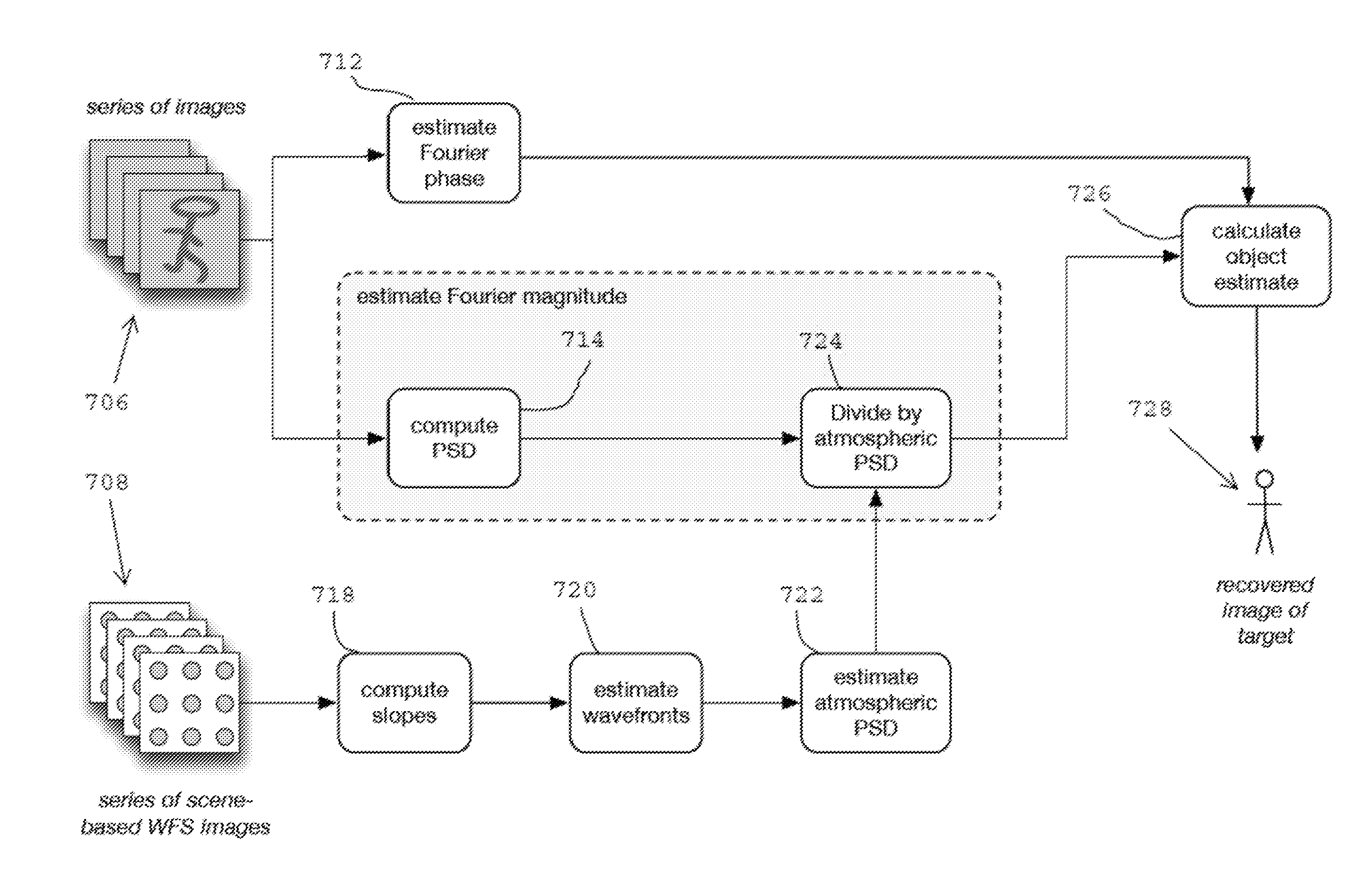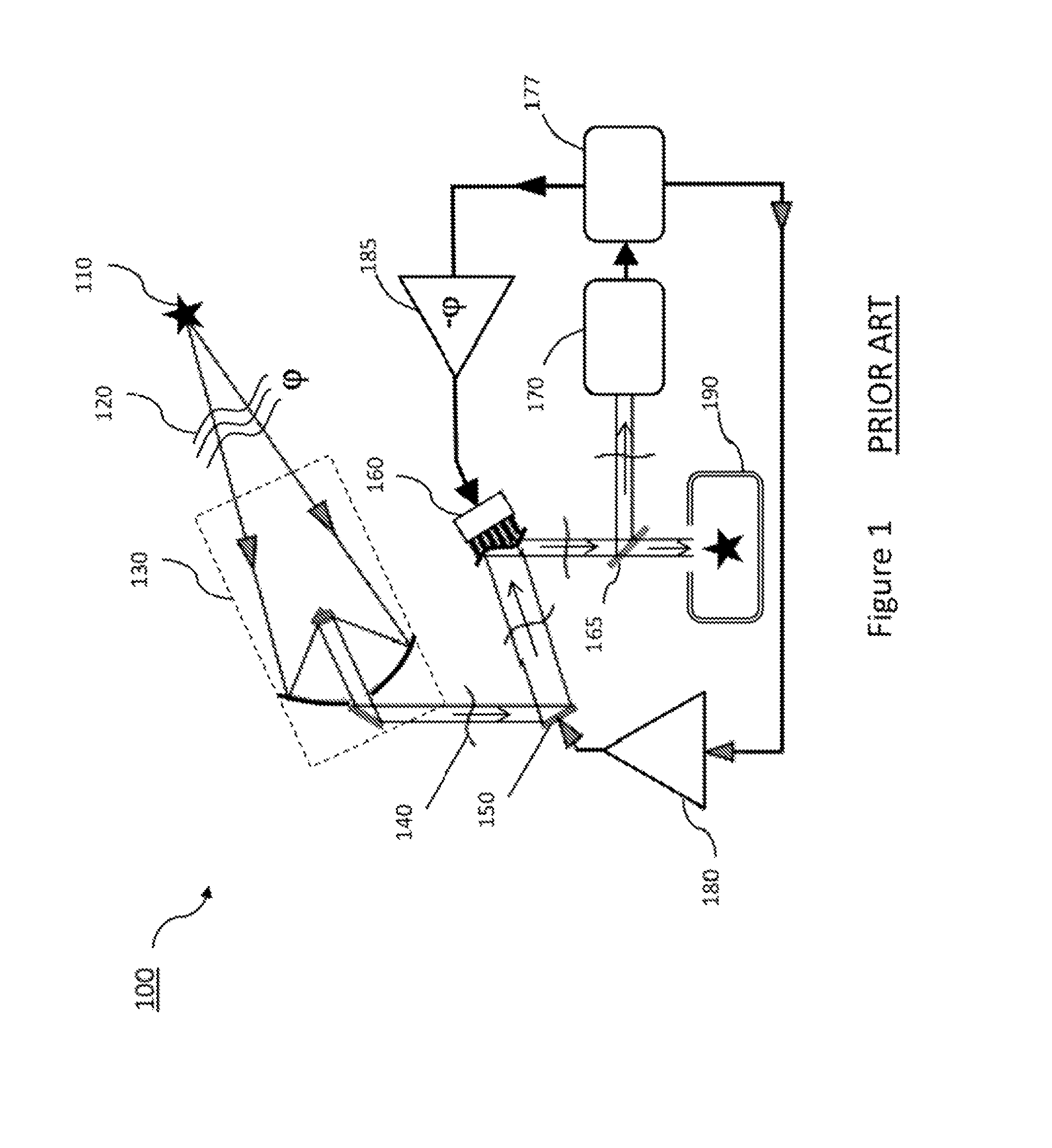Measurement of wave-front aberration in a small telescope remote imaging system using scene-based wave-front sensing
a remote imaging and wave-front aberration technology, applied in the field of reference-free compensated imaging systems, can solve problems such as path distortion, internal wavefront sensor error that must be measured, and airy image distorted,
- Summary
- Abstract
- Description
- Claims
- Application Information
AI Technical Summary
Benefits of technology
Problems solved by technology
Method used
Image
Examples
Embodiment Construction
[0044]An exemplary embodiment of a reference-free compensated imaging system is shown in FIG. 3A. The goal of system 300 is similar to that of the prior art in FIG. 2A, namely, to enable high-quality imaging of an extended object 305, whose image-bearing beam may have experienced propagation-path distortions along an atmospheric path 320. In this embodiment, there is only a single beam that traverses the path distortions and is received by the image compensation system 300—the image-bearing beam itself, 306. That is, as opposed to the prior art, there is no independent reference beam required to sample the path distortions. In the present case, the image-bearing beam 306 essentially emulates both the image-bearing beam 205 of the prior art, as well as the reference beam 110 of the prior art (both depicted in FIG. 2A).
[0045]As depicted in FIG. 3A, the propagation-path distorted, image-bearing beam 306 is incident upon telescope 330, and subsequently, traverses intermediate focal plan...
PUM
 Login to View More
Login to View More Abstract
Description
Claims
Application Information
 Login to View More
Login to View More - R&D
- Intellectual Property
- Life Sciences
- Materials
- Tech Scout
- Unparalleled Data Quality
- Higher Quality Content
- 60% Fewer Hallucinations
Browse by: Latest US Patents, China's latest patents, Technical Efficacy Thesaurus, Application Domain, Technology Topic, Popular Technical Reports.
© 2025 PatSnap. All rights reserved.Legal|Privacy policy|Modern Slavery Act Transparency Statement|Sitemap|About US| Contact US: help@patsnap.com



